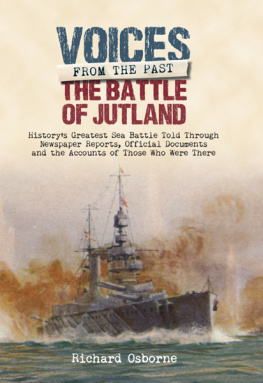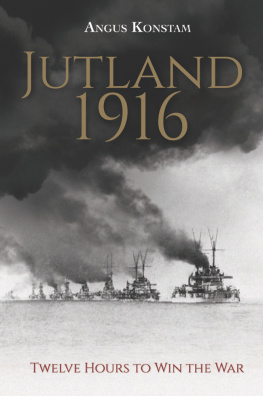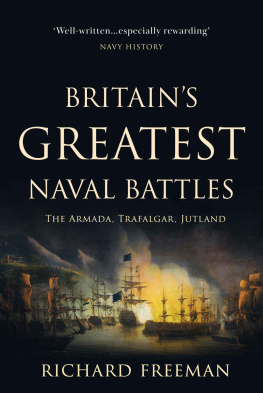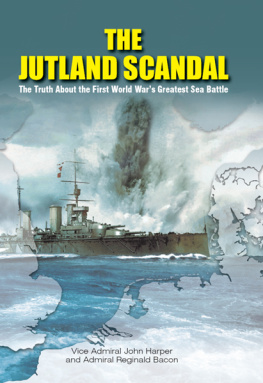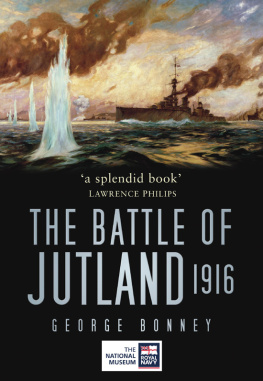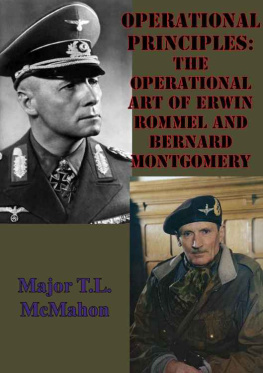
TRAFALGAR AND JUTLAND: A STUDY IN THE PRINCIPLES OF WAR
BY
BERNARD D. CLAXTON
JOHN H. GURTCHEFF
JEFFERY J. POLLES
This edition is published by PICKLE PARTNERS PUBLISHINGwww.picklepartnerspublishing.com
To join our mailing list for new titles or for issues with our books picklepublishing@gmail.com
Or on Facebook
Text originally published in 1985 under the same title.
Pickle Partners Publishing 2015, all rights reserved. No part of this publication may be reproduced, stored in a retrieval system or transmitted by any means, electrical, mechanical or otherwise without the written permission of the copyright holder.
Publishers Note
Although in most cases we have retained the Authors original spelling and grammar to authentically reproduce the work of the Author and the original intent of such material, some additional notes and clarifications have been added for the modern readers benefit.
We have also made every effort to include all maps and illustrations of the original edition the limitations of formatting do not allow of including larger maps, we will upload as many of these maps as possible.
TABLE OF CONTENTS
Contents
TABLE OF CONTENTS
REQUEST FROM THE PUBLISHER
LIST OF FIGURES
Figure 1: Area of Operations
Figure 2: British and Allied Fleet Movements
Figure 3: Battle of Trafalgar
Figure 4: Nelsons Approach
Figure 5: North Sea, 1914-1918
Figure 6: Jutland from 1415 to 1800 (British Local Time)
Figure 7: The Turret Trap
Figure 8: Crossing the T
Figure 9: Jutland from 1815 to 1845 (British Local Time)
Figure 10: Jutland (The second clash between the battle fleets)
Figure 11: Jutland (The tracks of the two fleets during the night 31st May-1st June)
FOREWORD
Sun Tzu approximately 2500 years ago said, War is a matter of vital importance to the State....It is mandatory that it be thoroughly studied. This statement has been proven valid since man began fighting and is as vital today as it was in the primordial days of warfare. At the Air Command and Staff College, we have taken heed of this warning and actively encourage our national military leaders, present and future, to study and to internalize the lessons of past wars. We do not believe this study has to be dry and boring as many history lessons seem to be. We believe that history can be entertaining and interesting as well as educational. Thomas Hardy said in 1906, War makes rattling good reading...,and this is the aim of our monograph seriesto provide entertaining, interesting, and educational studies of history.
In this study, three of our faculty members have combined to present a study of naval warfare. The focus is on two great naval battlesthe Battle of Trafalgar and the Battle of Jutland. Many descriptions and accounts of these battles have been produced in the past, but the approach used in this study is unique. The battles are analyzed using the US Air Forces list of the principles of war. The authors conclude that adherence to the principles of war played a significant part in both battles, and on a larger scale, conclude that protection of sea lines of communications is as vital in todays economic structure as it was in Nelsons and Jellicoes eras. We hope you find this study interesting, informative, and thought-provoking.
PREFACE
This study is the combination of two research papers prepared by Major Jeffrey Polles and Major John Gurtcheff while course officers at the Air Command and Staff College. Major Polles prepared the study of the Battle of Trafalgar, while Major Gurtcheff analyzed the Battle of Jutland. As the Chief of Military History and Theory at ACSC, I combined and edited the projects and also added a section on seapower philosophies. I would like to thank Dr. John F. Guilmartin, Jr, Rice University and Dr. Howard M. Hensel, Visiting Professor, ACSC, for their encouragement and critiques of this study. I would also like to thank Brigadier General Richard Ingram, Commandant, ACSC, for his encouragement and support of this project. Finally, I would like to thank my wife, Cindy, for her understanding and support on the home front during the many extra hours I spent at the office preparing this analysis of Trafalgar, Jutland, and the principles of war.
INTRODUCTION
The principles of war represent generally accepted truths of warfighting which have been demonstrated to be successful in the past. Antoine Jomini stated:
There exists a small number of fundamental principles of war, which could not be deviated from without danger, and the application of which, on the contrary, has been in almost all times crowned with success. {1}
And General Curtis LeMay said:
For centuries, successful national military strategies have been based on principles of war learned in equally as many centuries of military experience. Those lessons came hard; and at great cost in lives and gold, and in national power....(These) principles of war...have been successful for more than 2500 years. We ignore these lessons at our peril. {2}
Military officers may use these principles of war in two ways in the study and practice of the art and science of war. First, they may be used as a guide to the study of military history. By studying the past we may be able to determine what was done correctly and what was done incorrectly in earlier wars. Applying the knowledge thus gained we may, hopefully, avoid repeating those things done wrong and strive to repeat those things done correctly. Second, the principles of war may be used as a guide by senior and mid-level officers in formulating plans for military operations and by junior level officers and men in executing those plans. Adherence to a mechanical application of the principles, however, does not guarantee success. For war is an art as well as a science, and the finesse of the man in applying the principles plays a great part in determining the success or failure of the plan.
By constructively applying these two uses of the principles of war, students may be able to internalize through academic study and planned practice what, in the past, military officers had to derive intuitively through trial and error in actual warfighting. The principles were learned intuitively because few, if any, commanders consciously put into words any universal truths which could be derived from their experiences, even though there were historians present to record (with varying degrees of accuracy) the actual events. It was not until after the First World War that the Western nations began to express the principles in definite lists of aphorisms. {3}
The purpose of this study is to apply the principles of war (as listed and defined by the United States Air Force) to two great naval engagements: the Battle of Trafalgar and the Battle of Jutland. These battles, fought in 1805 and 1916 respectively, were fleet-to-fleet engagements. Even though there were great changes brought about by die tremendous advances in technology in the intervening 111 years between the two battles, it will be seen that adherence to the principles of war was just as critical at Jutland as it was at Trafalgar.






